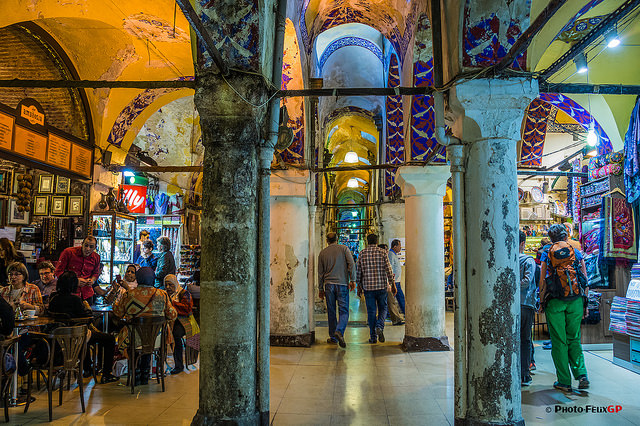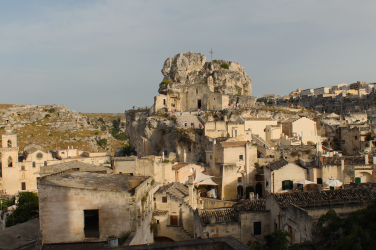Either I conquer Istanbul or Istanbul conquers me – Fatih Sultan Mehmet
Istanbul – once the capital city of the Roman and Byzantine, the Latin, and the Ottoman empires – is today a modern fusion of history, culture, religion, race, class, and architecture. It is a mystifying city which captivates your senses and leaves you wanting more. The buzz and the liveliness can be stressful for some but if you like the sound of a memorable adventure then Istanbul is the place to be!
History
Prior to being known as Istanbul, Constantinople, named after Emperor Constantine during the Byzantium period in the 7th Century BC, became the capital city of the Roman Empire as it was, and still is, of strategic importance. As it was almost completely surrounded by water, the city could be easily defended against attacks. Constantinople developed under the influence of not only Christianity but also of earlier Anatolian civilizations and Eastern ceremonies as well as laws and rules taken from Rome. Fast forward a few centuries: Constantinople was conquered in 1453 by Sultan Mehmed II (who was only 21 at the time!), and became the capital city of the Ottoman Empire. During the Ottoman Empire, the city of Istanbul (derived from the Greek word for city, “Stanbolin”) developed under the influence of Islam but was also highly influenced by Europe, especially towards the later years of the Empire as the Emperors increased their interaction with their European counterparts. As the Empire weakened, the Turkish Republic was born in 1923 after the War of Independence led by the Republic’s founder Mustafa Kemal Atatürk. Atatürk envisioned Turkey as a modern, secular, and European state. Since then, Turkey has come a long way as it is a member of many international organisations such as the UN and NATO, and most importantly is a candidate to become a member of the EU.
Architecture
Since Istanbul has hosted many empires, you can find their traces in the form of buildings, functional constructions, and statues. The most well-known architect is Mimar Sinan. It is said that most of his work has been inspired by his unrequited love for Mihrimah Sultana – the only daughter of Sultan Suleiman and Sultana Hürrem. The story that is told most often explains the design of the two adjacent mosques of Mihrimah Sultan standing opposite each other (one in Üsküdar the other in Edirnekapı). Mimar Sinan designed these mosques in such a way as to represent Mihrimah, which in Persian means the sun and the moon. On Mihrimah’s birthday (21 March), when the sun goes down over the single minaret in Edirnekapı, the moon rises over the mosque in Üsküdar – hence representing Mihrimah. There are other must-see buildings (each with their own story) such as the Hagia Sophia, Blue Mosque (Sultanahmet Mosque), Topkapı Palace, and Galata Tower.

Istanbul’s bazaars draw in the crowds
Culture
One of the most intriguing aspects of Turkish culture is the collective bath i.e. hamams. Hamams, or Turkish baths, is not only a place where you can wash yourself (ancient Greek or Roman style) but it is also great for relaxing since it is similar to a sauna. Usually, the Turkish baths are separate for men and women. You can find many hamams in Istanbul, but if you only visit one it should be the Çemberlitaş Hamam (the oldest hamam in Istanbul dating back to Selim II’s era (1566-74)).
If you see a chain of cars beeping madly at their horns, do not worry! You’ve just witnessed a traditional Turkish wedding custom.
If you’re a big fan of shopping then you’ve come to the right place! There are many historic and modern shopping centres all over Istanbul. One of the oldest and largest covered markets in the world is the Grand Bazaar. While walking through the Bazaar, you’ll come across the hustling of the people, the echoing of the voices, the bright colours and the intoxicating spices – all of which makes you will feel like you’ve travelled back to ancient times.
A great way to escape the hecticness of Istanbul is to go on a bike tour on the Prince Islands. These islands are not only peaceful and quiet but also gives a Victorian feeling since you can see many wooden Victorian cottages and horse-drawn carriages. Make sure to take the earliest sea bus there so as to avoid the local crowds to the islands!
If you see a chain of cars beeping madly at their horns, do not worry! You’ve just witnessed a traditional Turkish wedding custom. If you’re lucky, you might even get to witness traditional folk dancing (halay) on the streets, accompanied by davul (drum) and zurna (shrill pipe). Do not hesitate to take part in the halay, you’ll be most welcomed!
Food
While wandering the streets of Istanbul, you’ll find many street vendors selling and shouting “Simit!”. Since 1525, this crunchy circular white bread encrusted with sesame seeds has been produced in Istanbul. The traditional way of eating simit is with black tea looking out towards the beautiful Bosphorous sea. One could even say that strong black tea is the national drink and pastime for Turkey, but there are other traditional drinks that you must try! In the hot and humid summer weather of Istanbul, ayran (a yoghurt drink) is the answer to cool you down. In cold and rainy weathers, sahlep (a hot milky drink mixed with flour made from Orchis tubers) is a great way to keep you warm. Interestingly, sahlep was also consumed in Europe before the consumption of tea and coffee. Rakı is another national drink – usually drunk alongside different types of meze or better yet with fish!

Why not take a break with a cup of Turkish tea and a ‘simit’?
Since Istanbul is surrounded by the Bosphorous sea, there is no other great place to try seafood than here! One of the local foods is balık ekmek (fish sandwich). Not only is it cheap but also very tasty. You can find these Balık Ekmek restaurants near the Galata Bridge. The locals prefer to eat this fish sandwich while walking rather than sitting down as it is more enjoyable. If you don’t like fish, then you can always go for a kebab (thinly sliced meat served on a plate) or a döner (thinly sliced meat sandwich)!
There are of course many other reasons why you should go to Istanbul, but I’ll let you figure those out while you’re there!
Cover photo: Pedro Sezeleky (Flickr); Credit: CC BY-SA 2.0









